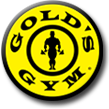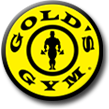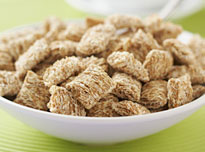11 Ways to Pick Out Healthy Food
Use these savvy shopper tips from health.com to choose healthy versions of 11 common snacks, meals and drinks.
Prepared food that's healthy too
It's a common ploy. You walk down the grocery store aisle and are bombarded with "all natural" and "immunity boosting" claims on boxes, bags and bottles.
With so many enthusiastic labels shouting out to you, how can you tell which packaged foods are healthy and which ones are nutritional nightmares?


BREAKFAST CEREAL
Most cereals are similar in serving size and calories but differ in fiber and sugar content, says American Dietetic Association spokesperson Keri Gans, R.D.
Buy those with at least 5 grams of fiber per serving and less than 12 grams of sugar per serving. The only way sugar in cereal is good for you is if it comes from dried fruit, and not in the form of high fructose corn syrup, molasses or honey, Gans says.
In general, the fewer the ingredients the better (for example, shredded wheat is usually just that). Stay as close to 5% of your age group’s recommended daily allowance (RDA) of sodium as possible, and definitely don’t consume more than 20% with your cereal.

BREAD
Look for bread with no more than 100 calories and 150 milligrams of sodium per slice, and at least 3 grams of fiber (which rules out white bread).
And not all wheat bread is healthy. "Just because something says it might have whole-wheat flour in it doesn’t mean it’s 100% whole wheat," says Gans. Instead, look for breads that say "100% whole grains."
And it’s worthwhile to read the ingredient list. Whole wheat, oats or other whole grains should be the first ingredient, as opposed to refined flours. If whole-wheat flour is listed first and followed by other flours, that bread will be lower in fiber. Limit molasses and other sweeteners too.
SNACK BARS
Pay attention to the protein content, along with the calories, fat, sugar and fiber, in these portable noshes. The best buys have at least 5 grams of protein and 3 grams of fiber, less than 10 grams of sugar, and no more than 200 calories, if it’s a snack.
It can contain 300 calories if it’s a meal, says Gans, and 8 to 10 grams of protein is fine, but 20 grams is probably too much. Limit yourself to about 10 grams of total fat, and no more than 1 gram of saturated fat, but also check where the fat is coming from. "Nuts are the best source of fat in a snack bar," Gans says.

MICROWAVE MEALS
Even low-cal options can contain more than 30% of your daily sodium. “You need to compare brand to brand, because most frozen dinners are going to have more salt than they should,” Gans says. “Look for the ones with the smallest percentage of daily value.”
Also, fat and calorie content is an issue with these meals. They can include unsaturated fats from olive oil and salmon but not saturated fat from cream or butter. Also aim for less than 500 calories. And since this is a meal, make sure you have 10 grams of protein or more per serving.
But bear in mind that you’re probably not going to get enough veggies from a frozen dinner, so enjoy a side salad too.
FROZEN VEGGIES
If you don’t have fresh veggies, frozen ones can fill the greens gap. However, choose products that contain just vegetables sans sauce. “I guarantee if they’re made with anything, it’s typically a cream or cheese sauce, and you’re better off if you just make your own,” Gans says.
If you like the extra flavor, sprinkle Parmesan cheese on the veggies. One half-cup serving of Birds Eye Broccoli and Cheese Sauce contains 90 calories, 3 grams of saturated fat, and more than 20% of your daily sodium, while the same-size serving of steamed broccoli with a tablespoon of Parmesan cheese contains 37 calories, 2 grams of fat and about 5% of your daily sodium.
SOUP
Stay below 20% of your RDA of sodium (about 460 mg for a daily allowance of 2,300 mg, or 300 mg for 1,500 mg). Several companies make low-sodium soups that fall within this range.
Calories should be limited to 200 per serving unless the soup constitutes your entire meal, in which case you can reach 400 calories.
And check the serving size. A can typically contains two servings, and eating the entire thing could put you over your sodium limit.
Protein is a plus, and a soup can make a good snack or partial meal if it has between 5 and 10 grams of protein. If it’s your entire meal, it should have at least 10 grams.
RICE AND PASTA
Choose rice and pasta that are high in fiber, and preferably pasta that is 100% whole grain. Brown rice doesn’t have as much fiber, but it has more than white rice.
Ideally, you want 7 grams of fiber per serving (and 25 to 35 grams daily), but before you dig into a bowl of rigatoni, check the serving size. Pasta expands as you cook it, so an ounce of uncooked pasta has more fiber—and more calories —than an ounce of cooked pasta. If the label doesn’t specify, assume the serving size is for cooked pasta.
And with flavored/packaged rice, check for added salt. There’s likely to be a lot—up to 1,000 mg in certain brands.
SALAD DRESSING
Almost all salad-dressing serving sizes are two tablespoons, making them easy to compare, Gans says. Stick to 50 calories or less per serving, and the less sugar the better.
"Basically any sugar in salad dressings is added sugar," says Gans. Choose salad dressings that are made of olive oil, like vinaigrettes, rather than mayonnaise, like ranch or Thousand Island.
And again, pay attention to sodium. The more processed foods you eat, the more salt you get.
YOGURT
Yogurt can be a low-cal way to get protein and calcium, but choose the wrong kind, and you could eat a container with nutritional content similar to that of ice cream.
Pick low-fat varieties, with at least 6 grams of protein. Greek yogurts have more protein per serving than plain yogurt, but full-fat Greek yogurts can contain up to 18 grams of saturated fat.
Also check for sugar. "Oftentimes sugar is off the charts in yogurt," Gans says. Aim for less than 20 grams of sugar per serving. Choose a version that has lower sugar, between 6 and 12 grams, like plain yogurt, then add your own sweet fruits.
The good news is yogurt is low in sodium.
SPORTS DRINKS
Unless you’re involved in an endurance activity for over an hour, you don’t need a sports drink, says Gans. Be aware that if you do reach for a sports drink, you can end up consuming more than 60 calories per serving.
If you are sweating heavily and need replenishment, have one that has below 60 calories per serving and make sure you know what the serving size is (bottles often contain two servings).
"A lot of them are just sugared water, and you’re getting extra calories, which you don’t need," Gans explains. Though sports drinks are great while exercising, choose water if you’re simply thirsty on a hot day.
SALTY SNACKS
Salty flavor is a favorite among snackers, but you should make sure you don’t get more than 15% of your daily sodium from snacking, says Gans.
To indulge wisely, first check the serving size. Find out how many pretzels or chips constitute one serving. Take only that amount from the economy-size bag and don’t go back for seconds.
Search for the least amount of salt and fat per serving (pretzels tend to have less fat than chips). Baked versions are better than fried ones, as they contain less fat. But be careful. These snacks often pour on more salt to compensate for flavor.
Gold's Gym Mall Ciputra | Gold's Gym Mall of Indonesia | Gold's Gym Thamrin City | Gold's Gym Cilandak Town Square | Gold's Gym Baywalk Mall Pluit | Gold's Gym Kalibata City Mall | Gold's Gym Braga Citywalk | Gold's Gym Cihampelas Walk | Gold's Gym Summarecon Mall Serpong | Gold's Gym Mall @ Alam Sutera | Gold's Gym Bintaro X-change | Gold's Gym The Breeze BSD | Gold's Gym Grand City Surabaya | Gold's Gym Surabaya Town Square | Gold's Gym Grand Metropolitan Bekasi





